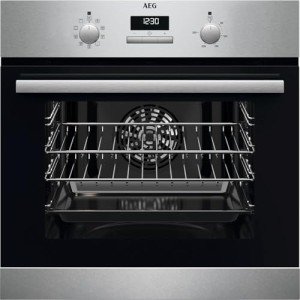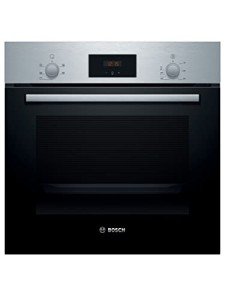
Best Single Oven Electric
Add a review FollowOverview
-
Founded Date 2008 年 12 月 2 日
-
Sectors Engineering
-
Posted Jobs 0
-
Viewed 12
Company Description
You’ll Never Be Able To Figure Out This Single Built In Oven’s Benefits
The Comprehensive Guide to Single Built-In Ovens: Features, Benefits, and FAQs
Introduction
In modern kitchens, the integration of devices is essential to attaining a structured style. Amongst these home appliances, the built-in oven stands apart as a staple for everyday cooking. In specific, single built-in ovens are getting appeal due to their space-saving design and efficiency. This article explores the features, benefits, and frequently asked concerns about single built-in ovens, helping property owners make notified options.

What is a Single Built-In Oven?
A single built-in oven is a cooking device developed to be embedded within kitchen cabinetry, providing a smooth appearance that complements the kitchen’s visual. Unlike freestanding ovens, built-in variations use a variety of functions and designs that cater to contemporary cooking needs.
Key Features of a Single Built-In Oven
Single built-in ovens come with a variety of features that improve performance and user experience. Here are some of the most crucial qualities:
| Feature | Description |
|---|---|
| Size and Capacity | Usually varies from 24 to 30 inches in width; ideal for numerous kitchen sizes. |
| Cooking Modes | Numerous settings, including convection, baking, broiling, and often steam cooking. |
| Controls | Digital touch controls or traditional knobs with exact temperature level settings. |
| Self-Cleaning Options | Many designs consist of self-cleaning functions for much easier maintenance. |
| Energy Efficiency | Designed to take in less energy, frequently with an A+ energy rating. |
| Security Features | Includes child locks, cooling systems, and temperature sensing units. |
| Design Options | Offered in numerous surfaces (stainless steel, black, etc) and designs (modern-day, traditional). |
Benefits of Using a Single Built-In Oven
The adoption of single built-in ovens uses various benefits:
- Aesthetics: They create a modern-day and polished appearance in the kitchen, mixing flawlessly with kitchen cabinetry.
- Space-Saving: Ideal for smaller sized kitchens, they are developed to optimize area by being built into walls or cabinets.
- Increased Functionality: Many designs come with innovative cooking technology such as wise functions that permit remote control by means of smartphone.
- Easy to Use: With instinctive controls, built-in ovens are easy to use and appropriate for both newbie and experienced cooks.
- Improved Cooking Performance: Convection designs circulate hot air for even cooking results.
Popular Brands and Models
Numerous brands dominate the single built-in oven market, each offering special features to cater to customer preferences. Here are some significant ones:
| Brand | Popular Models | Secret Features |
|---|---|---|
| Bosch | HBN8451UC, HBL8453UC | European design, convection heat, Wi-Fi connection. |
| Electrolux | E30SO75GPS, E30SO75PPS | Variations in size, advanced barbecuing abilities. |
| Samsung | NV51K6650SG | Dual convection, smart innovation, versatile cooking modes. |
| Whirlpool | WOS51EC0HS | Cost effective, trusted, self-cleaning features. |
| LG | LWS3063ST | Smart innovation, air fry mode, smooth aesthetic appeals. |
Installation Considerations
Setting up a single built-in oven includes particular considerations:
- Measurement: Ensure that the area set aside is suitable with the oven’s dimensions.
- Ventilation: Adequate airflow should be preserved for safety and efficiency.
- Electrical Needs: Check voltage requirements and ensure correct electrical outlets are readily available.
- Professional Installation: While some house owners might pick DIY, employing an expert can mitigate installation issues.
Regularly Asked Questions (FAQs)
-
How much area is needed for a built-in oven?
- A built-in oven usually needs a designated space that varies by model, generally from 24 to 30 inches in width. Constantly describe the manufacturer’s specifications for accurate dimensions.
-
Can I install a built-in oven by myself?
- While some may attempt a DIY setup, it is frequently recommended to work with an expert to make sure correct fitting, electrical connections, and ventilation.
-
Are single built-in ovens more expensive than freestanding models?
- Normally, yes. Single built-in ovens tend to cost more due to their design, installation, and extra functions.
-
What are the differences between convection and routine ovens?

- Convection ovens have a fan that circulates hot air throughout, resulting in even cooking. Traditional ovens depend on glowing heat, which may cause locations and unequal cooking.
-
What maintenance is needed for a built-in oven?
- Routine cleaning, guaranteeing vents remain unobstructed, and keeping an eye on functions. Many models offer self-cleaning alternatives, which simplify maintenance.
Single Built In Oven built-in ovens represent a merging of design, benefit, and performance in modern kitchens. With a plethora of functions and models available, these ovens cater to numerous cooking needs and choices. Whether you are a hopeful chef or an occasional home cook, acquiring an appropriate single built-in oven can boost your cooking experience while elevating your kitchen’s visual. Careful consideration of functions, installation requirements, and upkeep will cause a gratifying financial investment in this necessary kitchen device.


